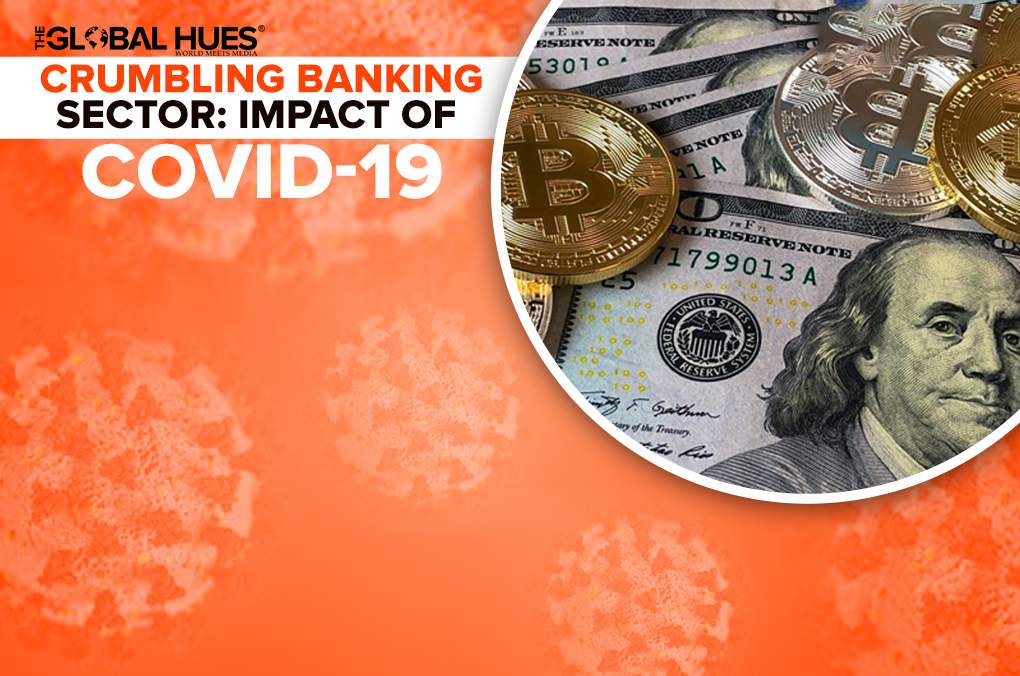
The banking sector is crumbling due to instability and high volatility created by Covid-19 in global capital markets. As the world is combating the virus, the economy is going to hit harder downwards in the coming months leaving an adverse effect on the banking systems.
After what happened in late 2007 and 2008 citizens are worried about the crumbling banking sector during COVID-19. In 2007-08 the banking sector of the U.S. fell on its knees due to home loan mortgage. Hundreds and millions of dollars cost to the banks when the housing market crashed. Banks weren’t completely transparent at that time about the Collateral Damage obligations (CDO).
The market crash suddenly put the depth in the Economy. Banks pulled CDO and the public sectors suffered their wealth, job, and lifelong earnings. The situation got severe and the government had to step in. Congress made sure to uplift the economy again, however, the public wasn’t completely assured at that time.
Later, in 2010 congress passed a few acts to assure transparency in the banking sector. The acts concerned transparency, less borrowing, and less long-shot bets. There were ‘stress-tests’ to keep the banks in the right direction. The banks fall back into the old habits, changing the CDO into a similar CLO which stands for the collateral loan obligation. This time the target was businesses, not the housing sector. Trillions of dollars of loans are still outstanding under the CLO category.

Now, due to COVID-19, the banking sector is again crumbling, a different kind of shrinkage is seen, economists are worried that it might turn out to be even worst than the 2008 fall.
Banks have been handling more capital since the 2008 crisis. However, the CLO is still rolled out in different sectors. Banks are still gambling with lots of money. The public disclosure of CLO is minimal to none, in this case, the public can never be sure of the losses they might be dealing with in case the market crashes.
The amount in CLO is assumed to hold 60-67% of the total loans that are rolled out. The crisis can sweep off the profits into debts and liabilities for businesses in a second if any crash occurs. Most borrowers of loan are marked as B- grade. This might seem normal and not so bad but in reality, these companies can drown in debt if the market crashes.
During the pandemic, the sectors that circled around partying and travel are down. They might never gain the same pre-pandemic momentum again. Already in lesser debt, and numerous CLO’s on their heads, these companies might never rise again. It can only get worse from this point onwards. Loan defaults have been happening since forever, however, since April 2020, they are increasing. The healthy and up running businesses are not able to pay their loans back, and many companies are simply drowning. The banking sector is crumbling even worse than it was anticipated.
The areas that are likely to be most impacted by COVID-19 are:
Profitability and credit management/cost of risk
The core banking profitability is reducing in mature markets due to the low-interest-rate scenario under the impact of COVID-19. The shift of income source to commission-based payments and tech businesses is opted by financial institutions.
The corporate and retail clients of the banks are undergoing a risk of increased credit, as an immediate effect of health emergency on the real global economy.
Banks are suggested to overlook the short time phenomenon which is temporary in nature and focus on the long–term and long-lasting impacts to improve the financing situation in the real economy and support its recovery. The management and reclassification actions must be keenly acted upon.

The important aspects to be noticed are:
- Every new information incorporated in the updates and forward-looking information must be carefully analyzed, keeping COVID-19 in mind. It is important to realize that policies and updates right now may last for fewer months and the cyclical downturns that are induced by economic and financial causes must be kept in check.
- Any waivers that are granted by the authorities must be taken into consideration by the update of ‘default rates’ by the authorities in relation to the temporary phenomenon of creditworthiness expiry.
- The recovery rates must be updated on the most appropriate timescales to take into consideration the positive impacts that should be derived from credit recovery policies that can introduce various agreements on longer maturity or introduce various forms of deferred payments.
Credit equality is adversely affected as a consequence of crumpling economic activity, as the banks are increasing loans in loss provisions. Significant losses have been posted by a few European banks in Q1’20 (Jan-Mar), bad loans may surge potentially.
As the spread of pandemic is on full-fledged speed, the business will be in downfall significantly. Henceforth, financial institutions will be on the lookout for additional measures to protect their business from collapsing and remain relevant to their customer base. Post-lockdown measures must be kept in mind, institutions must be prepared for the aftermath. Keeping everything in mind will help create a flexible contingency plan including supportive solutions for customers and crisis management for the bank.
“Flattening the curve” with rapid responses

Most institutions have opted “Flattening the curve” approach to deal with the current situation. It includes minimizing the damage and disruptions and ensures the impacts on finance due to COVID-19 will lessen over years. Resilience is the demand of time to flatten the curve. The only look-out is a precaution. But a precaution in the current scenario enough? Shouldn’t the banking sector be prepared for such unexpected and unwelcoming scenarios? How many falls in the Economy are we seeing here exactly?
Sadly, no clear data is ever presented publically to figure these questions out.
The finance companies and banks need to be ready to look out for short, medium as well as a long term financial, operational, and institutional responsibilities. In the period of uncertainty, the best bet is to be prepared for anything and everything that might arrive in the future. There is a strong need for a reanalysis of plans and policies of business models. Both the customers as well as employees need to be looked for at the center of financial businesses.
Ref: KPMG
Also Read:



